
Ys X: Nordics Review
When Ys Seven was released back in 2009 for the PSP, it made a significant change to what was already an established RPG series at the time: it added a full playable party of characters. While games like Ys Origin allowed you to play as characters other than the series' central red-headed protagonist Adol Christin, it was still a single-character action RPG much in line with other franchise entries of its era, like The Oath in Felghana and The Ark of Napishtim, stylistically. In my review of the PC port of Ys Seven in 2017, I came away a bit mixed, feeling as if Ys began to conform to more ordinary JRPG stylings and structure compared to prior Ys entries.
In the three games since then in the last 15 years or so (Memories of Celceta, Lacrimosa of Dana, and Monstrum Nox), this 'party system' has generally remained intact, with small adjustments to implementation. While I personally warmed up to this more modern style in Lacrimosa of Dana, there's always been a contingent of Ys fans who have longed for the series to change things up once again — not necessarily asking for a pure 'return to roots', but to mix things up a bit lest the series begins to become stale in its current paradigm. This is where Ys X: Nordics comes in.
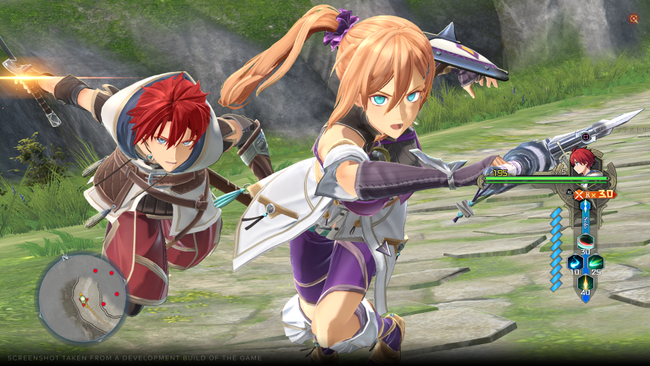
Unlike any Ys title since the aforementioned Ys Seven, Ys X does not quite have a playable party of characters. There are only two playable characters: Adol Christin and newly-introduced heroine Karja Balta. Also unlike recent games, these two work as a sort of unified cooperative pair, rather than as separate characters in a two-person party.
Functionally, Adol and Karja do each have their own equipment, their own battle skills, and their own stats, as if they were two separate party members. However, the EXP gained and their level is shared, and the duo work in tandem with each other at nearly all times. You'll more-or-less play as the two characters simultaneously throughout Nordics, constantly toggling between the pair.
Some components of the direct gameplay will still feel very familiar to recent entries. Adol and Karja will have their normal attack string, a quick-step dodge, and four active skills that can be set to the four face buttons on your controller. However, combat mechanics do tilt ever-so-slightly more akin to a character action game this time around.
The defining component of Ys X's combat design is the dual SP gauge, denoted as slanted rectangular pips in the game interface. SP is what allows Adol and Karja to perform combat skills. When you play as Adol, Karja's SP gauge will fill rapidly when she's in reserve. When you play as Karja, Adol's SP gauge will fill rapidly instead. That means that to get the most out of your SP, you'll want to switch between Adol and Karja frequently, so that one of the two character's SP is always quickly refilling. As you toggle between the two characters performing skills, you can raise your skill chain, which in turn lowers the SP costs of skills. Succinctly, almost everything about Nordic's combat is designed to entice the player to learn how to effectively use Adol and Karja together as a deadly dyad.
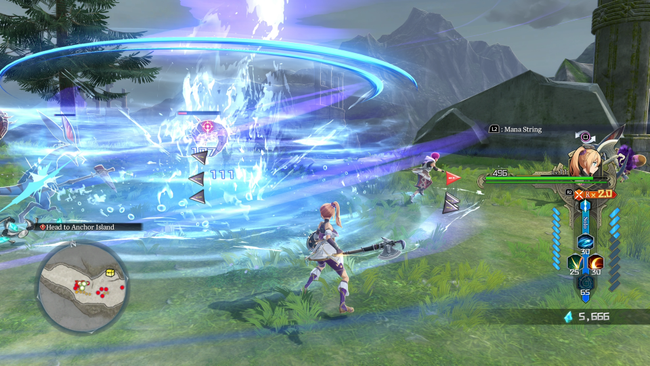
In addition to this character-switching cadence, there are two other key components of the combat system. The first of these is called Duo Mode, which allows the player to control Adol and Karja simultaneously by holding down the gamepad trigger. While the pair cannot move around easily in Duo Mode, Adol and Karja will now attack together with an increased damage output, while also gaining the ability to use co-operative Duo Skills — which work just like regular combat skills except it'll cost SP from both characters instead of one. Duo Mode overlaps the game's guard function, too, as switching to Duo Mode with proper timing can block enemy attacks. Blocking attacks with ideal timing leads to the second other key component: the Revenge Gauge.
The Revenge Gauge is a multiplier that increases the damage of your next Duo Skill. It starts at 1.0x and increases each time you successfully guard against enemy attacks. So, ideally, how you should use this mechanic is to regularly block enemy attacks as you combat them, and then unleash a high-damage Duo Skill when your multiplier is high. The maximum multiplier increases as you progress through the game.
While Ys X is not the first action RPG aiming for a sort of combat rhythm between a character pair, I think it is one of the most successful at this. I'm starting this review by discussing Ys X's combat design because I think it is easily the game's strongest suit. Nordics is a blast to play, and if you come to the Ys series primarily for fun, energetic battles, then you are in for a treat.
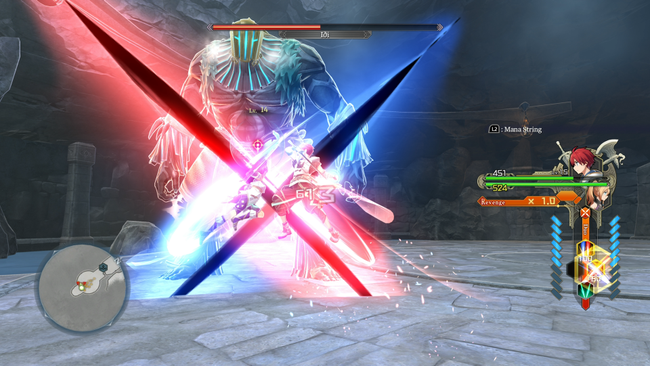
Another significant battle adjustment compared to recent games can be found in how Ys X handles dodging and guarding. While the specific implementation varied slightly, all games in the "party system Ys" era had "Flash" mechanics where either dodging or guarding an attack at the last moment would lead to a 'bullet time' like slowdown along with enhanced damage potential. In many instances, these mechanics were somewhat easy to manipulate, becoming something of a crutch to rely on in surpassing many of those games' challenges.
In Nordics, the Flash Dodge or Flash Guard mechanics are replaced with a system where some enemy attacks are labeled as Power Attacks — denoted by a red aura around the enemy — while some other enemy attacks are labeled Speed Attacks, denoted by a blue aura. Power Attacks can only be blocked by a well-timed guard, while Speed Attacks can be avoided by a dash. Both of these can lead to a counterattack opportunity, which in boss fights is often accompanied by an impressively dynamic mid-battle animation sequence. Overall, I think this revised system is a wholesale improvement over the Flash Dodge/Guard mechanics of previous games. It slightly narrows the utility to only a subset of enemy attacks while also forcing the player to be more observant of the types of attacks heading their way, rather than just mashing block/dodge whenever possible.
The strike/slash/pierce system of previous entries is also gone. In its place is a 'Break' mechanic. Some enemies and most bosses will have an armor meter that needs to be removed before you can really do damage to their HP. Various attack skills are better suited at dealing Break damage rather than HP damage, so you'll find yourself using certain skills to remove armor and other skills to deal damage. Of course, some skills are better suited to dealing damage to a wide area, while other skills are concentrated on a single foe.
Speaking of skills, Ys X: Nordics does a commendable job unlocking new combat skills throughout the entirety of the game's runtime. You'll regularly be gaining new skills for Adol and Karja, or new Duo Skills, and you'll frequently be swapping skills out to try new ones. This works well to keep combat from growing routine or stale.
I played through Ys X: Nordics on the game's Nightmare difficulty mode, and while a little bit unfair, I enjoyed the tension immensely. There's actually a nice mechanic in place where, as long as Adol and Karja don't *both* run out of HP, you still have a chance. As long as you can revive the other character in time, you can keep going even if you have only one HP remaining. It was tense, exhilarating at times, and simply a hell of a lot of fun.
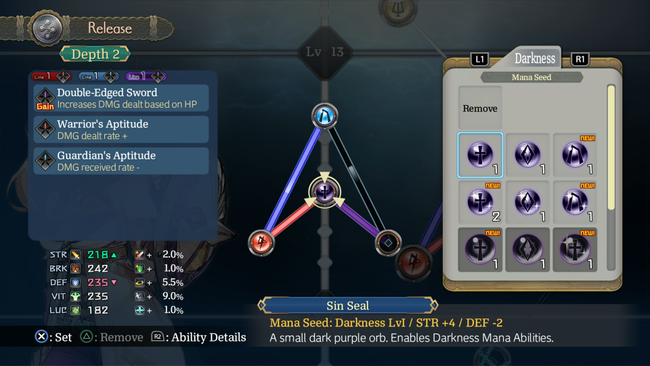
While most everything surrounding Ys X: Nordics combat components are remarkably entertaining and refreshing, unfortunately, many of the surrounding sub-systems, gameplay structure, and narrative elements are less so.
One of the new mechanics in Ys X: Nordics is the Release Line system, which is a node map somewhat reminiscent of Final Fantasy X's Sphere Grid (visually, anyway). It's more straightforward than it looks. Basically, you can slot in orbs of four different colors (Red, Yellow, Blue, or Black) on the node map and it'll offer bonus attributes such as slightly increased damage or critical rate. The more of a similar color you group together, the higher your stat bonuses will be.
Personally, I found that navigating through the node tree and synthesizing orbs to slot into it was more cumbersome than it was worth. I actually spent much of the game not touching the Release Line system at all, because I couldn't be arsed to do so. Every once in a while I'd randomly slot in orbs to gain something, but the whole component came across as a little bit undercooked and superfluous, to me. Before the end of the game, I did ultimately make sure every node was full and maximized color coordination as I could, but overall it's not a very engaging mechanic.
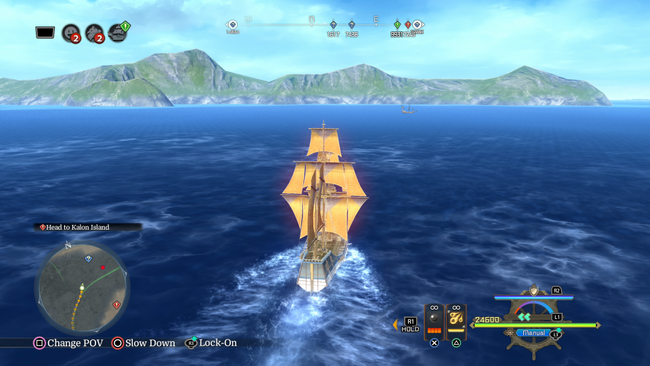
Probably the component of Ys X: Nordics that I'm most apathetic to is the world exploration, which this time around is mostly done in a ship on the ocean. For me, this component is a big misfire, not only for the ship-sailing itself, but also in the location design of many of the islands you'll encounter dotted on your sea chart.
For one, the ship navigation is painfully slow, at least for most of the game. Naval combat encounters while on your ship, while not fundamentally *broken*, are just kinda sluggish and dull - a stark contrast to the on-foot combat excellence. The fact that Falcom directly includes an in-game option to essentially trivialize all of the naval combat feels partially like an admission that it's an immaterial component of the game, despite being tied to the primary traversal mechanic around the game world. I assume the inclusion of a significant naval component was intended to be a defining component of Ys X's setting and aesthetic, but they outright whiffed on this one.
But it's not just the naval navigation itself. In James' import impressions of Ys X last year, one of his main criticisms of the game was its lack of visual variety, and I find myself in complete agreement with his assessment. As you discover new islands in the Obelia Gulf, it feels like 9 times out of 10 they will be similar sandy beaches with some short green grass and tropical trees. Many of these islands are linear in nature, too, and exploring these islands feels more like a perfunctory checklist filling than anything else. By the end of the game, as I backtracked through the world to wrap up some sidequests and journal filling, I often cycled through my warp points, unsure which island was which, because at that point they had all begun to blend together for me.
By the end of the game, there are a few exceptions. A water-themed temple is a nice change of pace from the beaches and caves, but otherwise, Ys X's environments and exploration are generally a disappointment.
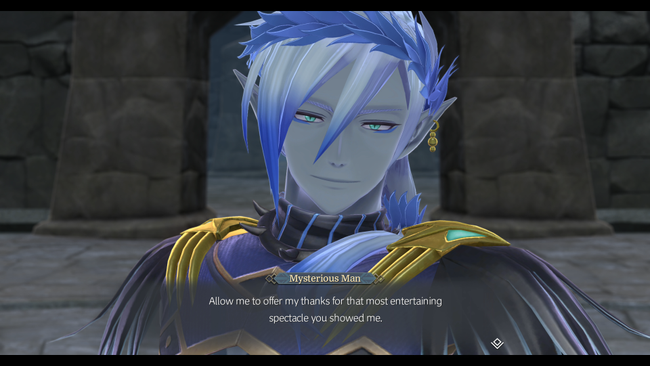
Do you remember the camp defense 'Suppression Battles' in Lacrimosa of Dana, or the 'Grimwald Night' battles in Monstrum Nox? This general idea returns in Nordics as 'Recapture Battles', which start as extended naval battles on your ship followed by familiar waves of on-foot battle encounters. Despite enjoying the combat mechanics, this sort of wave-based score-attack framing has never quite worked for me. I was personally never much of a fan of these components in previous games, so seeing the concept return yet again was met with a sigh and an eye roll. In fact, Recapture Battles may be my least favorite interpretation yet with the extended naval combat component. I wish Falcom would let this general concept fade away, to be honest.
There are other vestiges of Ys VIII and Ys IX that appear in Nordics. As you explore Obelia Gulf in your ship, the Sandras, you'll recruit numerous characters, similar to the island camp and Dandelion bar in previous entries. Each of them will offer a different service on the ship, such as enhancing your ship, selling gear, creating potions, or collecting the series mascot Pikkards.
For the most part, these characters themselves are ... fine. Grenn is somewhat endearing with his unabashed enthusiasm and Mirabel's unflappable composure is amusing at times, but much of the cast comes across as a bit cookie-cutter. Each character will have a minor backstory element that'll surface if you give them a gift and do a related quest, but it feels pro forma. A standout, to me, is the lighthouse keeper who raises his four-year-old daughter as a single father, but the rest of the Sandras' crew are generally unremarkable.
I know this is not uncommon in modern Falcom titles, but the limited voice acting is distracting, even found absent in some required story sequences and many key character scenes. It's a shame because the English voice performances that are there are generally well done, but it is what it is, I suppose.
Despite being lukewarm on most of the cast of characters, the character dynamic between Adol and Karja is easily my favorite in the series, although I acknowledge the fact that Adol is primarily a silent protagonist. Considering Adol doesn't speak (much), Karja is the de-facto lead character in Nordics, excellently portrayed in English by Cherami Leigh. Many Ys heroines often become damsels, or cartoonishly fall head-over-heels for Adol in a typical 'maiden' type role, or otherwise place Adol on some sort of untouchable legendary pedestal. Instead, in Nordics there's a believable, unbreakable camaraderie that develops between Adol and Karja. "Shield Brother" and "Shield Sister" are how they refer to each other. The two characters are literally tied together, and by the end of the game, it's more than just a romance or a friendship. It feels like an unyielding kinship built on unwavering belief in each other. I think Karja herself could afford to be a little bit less reactionary than she ends up being, but still, the bond she builds with Adol is a highlight.
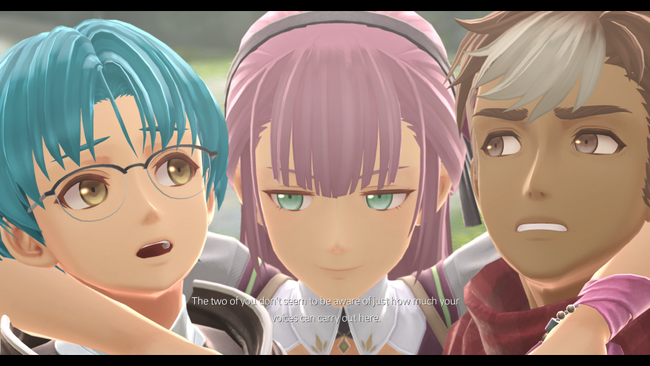
Ys games have never really been about the front-to-back narrative, despite the series becoming more and more story-focused in recent years. As seems to be typical in recent Ys entries, it feels like 80% of the game's narrative takes place in the last 20% of the game's runtime, and the narrative in Nordics didn't really work for me. It's fine as a vehicle for the gameplay, but the story itself unfortunately doesn't really elevate the whole package of the game. The villains are especially one-note, essentially arriving from nothing with a thin overall motivation.
I won't be specific for spoiler reasons, of course, but there are several instances in Ys X: Nordics plotline where I saw a dramatic plot moment occur only to be immediately addressed in a contrived manner moments later, instantly muffling any stakes that had been set. I can pardon the occasional isolated convenience for the sake of storytelling, but Nordics' habit of resolving conflicts with handwaves left me unsatisfied more than once. The game tries to throw in a narrative theme by the end of the game, too, but this also feels flimsy and falls flat.
I almost take it for granted these days when it comes to localized Falcom releases, but Ys X has yet another excellent PC port done by the team at PH3. We at RPG Site actually have an interview with Peter 'Durante' Thoman where we showcase and discuss the PC version and the porting process.
I come away from Ys X: Nordics more than satisfied with its renewed battle mechanics, but unfulfilled with most of the rest of the game that surrounds it. Ship navigation and island exploration never manage to become compelling, and the narrative largely falls flat. If you come to the Ys series primarily for entertaining combat, you'll have a blast - I just wish it was a little less lopsided.